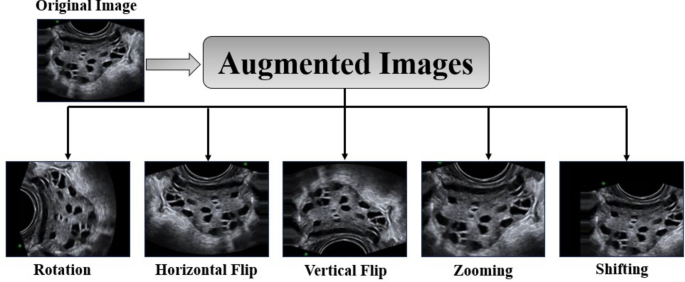Polycystic Ovary Syndrome (PCOS) is a widespread hormonal disorder affecting millions of women worldwide, causing a range of reproductive and metabolic issues. Early and accurate diagnosis is crucial for effective management, but current methods rely heavily on manual interpretation of ultrasound images, which can be time-consuming and prone to errors. In this groundbreaking research, scientists have developed an advanced automated system that leverages the power of Artificial Intelligence (AI) to revolutionize PCOS detection. By combining cutting-edge deep learning techniques with traditional machine learning, this innovative approach promises to streamline the diagnostic process, enhance accuracy, and ultimately improve the quality of life for women affected by this complex condition. Polycystic Ovary Syndrome, Ultrasound Imaging, Artificial Intelligence, Machine Learning.
Unlocking the Complexities of PCOS
Polycystic Ovary Syndrome (PCOS) is a multifaceted endocrine disorder that affects approximately 15% of women of reproductive age worldwide. This condition is characterized by a hormonal imbalance, leading to the development of multiple immature follicles in the ovaries, disrupting normal ovulation and causing a range of associated symptoms, such as irregular menstrual cycles, excessive hair growth, acne, and infertility. If left undiagnosed and untreated, PCOS can also increase the risk of long-term health complications, including type 2 diabetes, cardiovascular disease, and certain types of cancer.

Challenges in PCOS Diagnosis
Diagnosing PCOS can be a complex and subjective process, as it involves a combination of clinical assessments, blood tests, and imaging techniques, particularly ultrasound imaging of the ovaries. Traditionally, healthcare professionals have relied on manual interpretation of ultrasound images to identify the characteristic features of PCOS, such as the presence of multiple small follicles and an enlarged ovarian volume. However, this approach is time-consuming, prone to human error, and highly dependent on the availability of skilled radiologists, especially in resource-constrained regions.
Revolutionizing PCOS Detection with AI
To address these challenges, a team of researchers has developed an advanced automated system that leverages the power of Artificial Intelligence (AI) to detect and classify PCOS from ultrasound images. This innovative approach, known as CystNet, combines cutting-edge deep learning techniques with traditional machine learning algorithms to create a comprehensive and robust diagnostic tool.

Figure 1
The CystNet framework begins with a comprehensive image preprocessing stage, which includes techniques such as image resizing, normalization, augmentation, and segmentation using the Watershed algorithm and multilevel thresholding. These steps ensure that the input images are optimized for accurate feature extraction and classification.
Innovative Feature Extraction with CystNet
The heart of the CystNet model is its unique feature extraction process, which integrates the strengths of two powerful deep learning architectures: InceptionNet V3 and Convolutional Autoencoder. InceptionNet V3 is known for its exceptional ability to handle diverse spatial hierarchies, while Convolutional Autoencoders excel in unsupervised learning and feature extraction. By combining these approaches, the CystNet model is able to effectively identify and highlight the critical features that distinguish between affected and unaffected ovaries, leading to a more reliable and robust diagnostic process.

Figure 2
High-Accuracy Classification and Cross-Validation
The classification stage of the CystNet system employs two approaches: a dense (fully connected) layer and traditional machine learning classifiers, such as Random Forest and Adaptive Boosting. These models are rigorously evaluated using a 5-fold cross-validation process, ensuring the reliability and generalizability of the results.
The CystNet model achieved an impressive accuracy of 96.54% with the dense layer approach and an even higher accuracy of 97.75% when using the Random Forest classifier. These exceptional results demonstrate the potential of this AI-driven system to revolutionize PCOS diagnosis, reducing manual errors and streamlining the process for healthcare professionals.
Implications and Future Directions
The development of the CystNet framework represents a significant advancement in the field of PCOS detection and management. By automating the diagnostic process and enhancing accuracy, this AI-driven approach has the potential to facilitate timely interventions, improve patient outcomes, and reduce the burden on healthcare systems.
However, the researchers acknowledge that the current study has some limitations, such as the use of a single-source dataset, which may not fully capture the diversity of PCOS variations. Future research should explore the integration of multi-source datasets to further enhance the model’s generalizability and robustness.
Additionally, the computational demands of the CystNet model may pose challenges for real-world deployment, particularly in resource-constrained settings. Ongoing efforts to optimize the model’s efficiency and develop user-friendly interfaces will be crucial for seamless integration into clinical workflows.
Conclusion
The CystNet framework represents a groundbreaking step towards revolutionizing the diagnosis of Polycystic Ovary Syndrome. By harnessing the power of Artificial Intelligence and advanced deep learning techniques, this innovative system promises to streamline the diagnostic process, enhance accuracy, and ultimately improve the quality of life for women affected by this complex condition. As the scientific community continues to explore the frontiers of medical technology, the CystNet approach serves as a shining example of how AI can be leveraged to transform healthcare and unlock new possibilities in the pursuit of better patient outcomes.
Author credit: This article is based on research by Poonam Moral, Debjani Mustafi, Abhijit Mustafi, Sudip Kumar Sahana.
For More Related Articles Click Here
